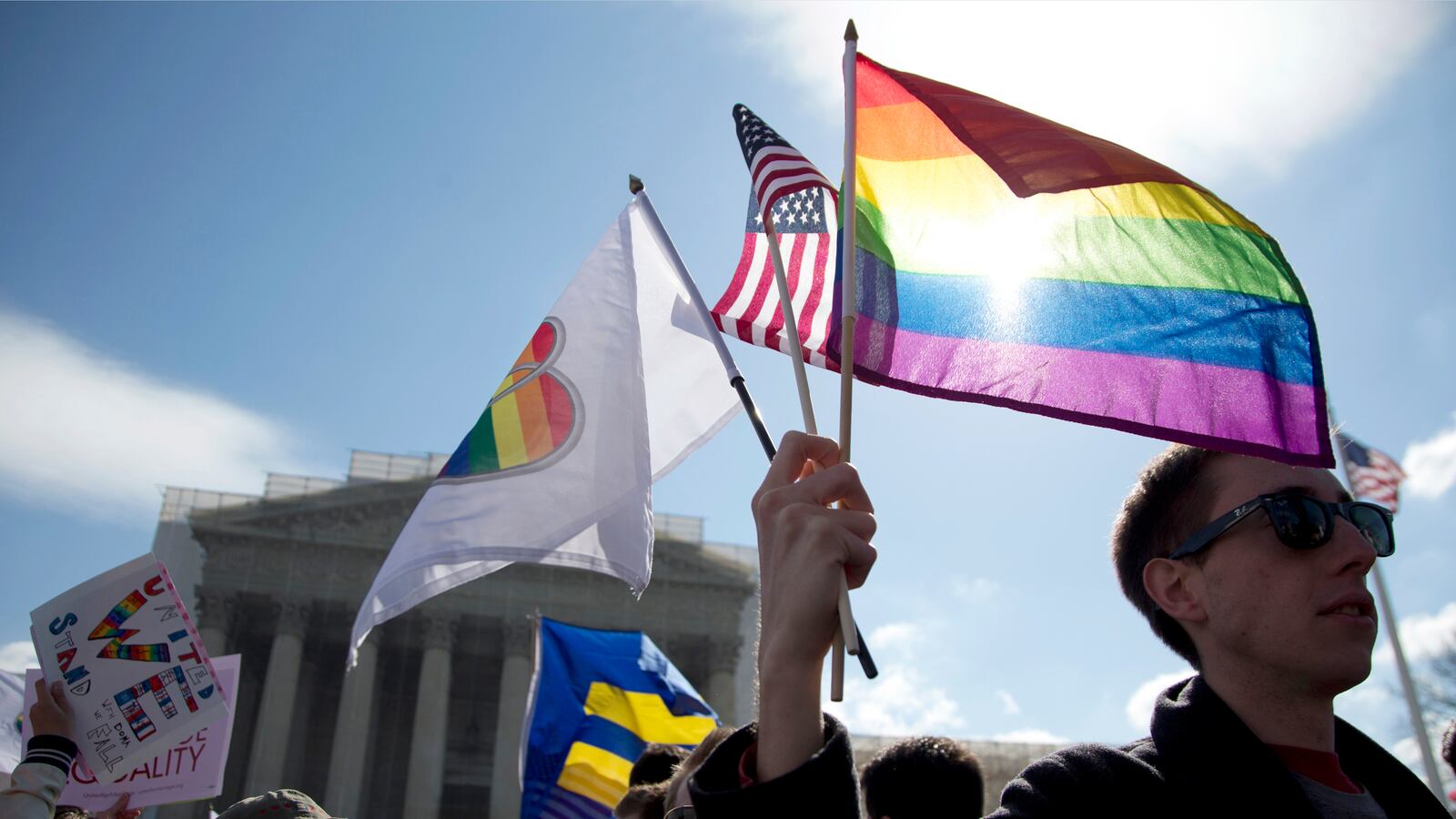Today begins one of the biggest weeks in the Supreme Court’s recent history. Certainly the biggest since it decided on Obamacare almost exactly a year ago, and I would say even bigger, because while that was a huge deal in a news sense, these decisions will drill right into the muscle and bone of our competing constitutional theories in this country—whether the Constitution is a living document that permits judges to use it to reach conclusions about changing social morality (the liberal view), or whether it should do no such thing and judges should never think about “outcomes” (the conservative one). The decisions should certainly focus liberals’ minds on what a crucial role the Court plays in shaping our lives, and the fact that we have four justices, two on each side, age 75 or older is a reminder of how the next president may well shape the nature and size of the Court’s majority for at least a generation to come, maybe two.

Let’s start with the cases at hand. As you read this Monday, the Court might already have announced its decision on the affirmative-action case before it, the voting-rights case, or the two same-sex marriage cases it is considering. A ruling against the University of Texas’s use of race as a sort of second-tier admissions consideration could spell the end for race-based admissions across the country. Similar changes have already led to a sharp decline in black enrollment at elite schools in Texas, California, and Florida, so the question would be whether a conservative decision in Fisher v. University of Texas would decrease black enrollment down the food chain.
The voting-rights case arose in Shelby County, Alabama, which had been drawing its districts so as to make likely the election of one black member of the city council in the town of Calera. But new lines were drawn, and the black candidate lost (it was all much shadier than that, and if you think Section 5 remedies are old-fashioned, I implore you to read this excellent account of the facts of the case in Calera by Lou DuBose).
On same-sex marriage, the court is hearing two cases, challenges to the 1996 federal Defense of Marriage Act and to California’s Prop 8, the 2008 ballot measure banning same-sex marriage that passed with 52 percent of the vote.
What’s going to happen? No one’s ever gone broke betting on right-wing outcomes from this court. Anthony Kennedy, of course, famously broke with the conservatives on same-sex relations in Lawrence v. Texas in 2003. But that didn’t tell us anything about how he feels about marriage. And he’s 10 years older and 10 years crotchetier. On the racial cases, any looming question marks are probably far smaller. Again, Kennedy hasn’t been as sweepingly opposed to affirmative action as the other four conservatives. But remember, this is the majority that told Seattle and Louisville that they couldn’t racially integrate their schools even according to plans that everyone agreed to!
That decision was a classic of the right-wing originalist genre. We struggled with segregated—and unequal—schools for many decades in this country. Then, in 1954, the Supreme Court said “No more.” At which point the South promptly ignored the Court. A few places integrated in the 1950s, but it really took until the early- to mid-1970s for integration to take hold. And, of course, as soon as it did, many white people hated it. This coincided with the rise of these originalists. They started getting on courts and issuing opinions guided by the belief that judges must be neutral as to outcomes.
Result? For a decade or more, under these “neutral” decisions, schools have been resegregating (especially in the … surprise, South!). But this is all right, you see, because judges just call balls and strikes, as John Roberts put it in 2005, and if it just so happens that all the black people who come up to the plate get called out on strikes, well, it’s not a judge’s job to make sure anyone gets on base, certainly not because of something as quotidian and accidental as their skin color, so it must be something about them. See?
Antonin Scalia restated this view yet again this past weekend at a speech in North Carolina. Scalia was in comparatively hippieish Asheville, where the state bar was convening, to deliver a talk called (get this) “Mullahs of the West: Judges as Moral Arbiters.” Mullahs! So liberal justices who want African-American high-schoolers to get a slot at an elite university are the same as Taliban members who don’t want girls to go to school at all. Both, after all, are engaged in moral arbitration! By about the late 23rd century, if this nation still exists, they’ll look back on the fact that this man was taken seriously as the one fact that by itself makes our entire age completely dismissible.
But in the here and now, he’s on the Supreme Court, and there’s no mystery as to how he’s voting on any of these cases. He is also, of course, the role model for right-wingers. He is, finally, 77 years old. Kennedy is 76. Ruth Bader Ginsburg is 80. Stephen Breyer turns 75 in August. The actuarial tables suggest they’ll all hold on through Barack Obama’s term, but the years 2017 through 2021, i.e., the first term of the next president, could see quite a shake-up on the bench.
A Republican president will mean a strengthening of the conservative majority and the final and total end of race as a remediating factor in society and, maybe, obstacles to the basic federal right of marriage for same-sex couples for decades to come. A Democratic president, however, will almost certainly mean that the Supreme Court will flip to a liberal majority for the first time in what will by then have been 30 years.
Imagine what that would mean. The Court is in many ways the hard right’s last remaining instrument in this country. They can’t win the presidency. They hold the House, via gerrymandering, but they can’t turn Paul Ryan’s budget or any of the rest of their radical agenda into law. But that slim Court majority is their last wrecking ball. Take it away, and the machinery at the right’s disposal is greatly diminished. If the worst happens this week, it should simply give liberals the resolve to ensure that the future is very different.





